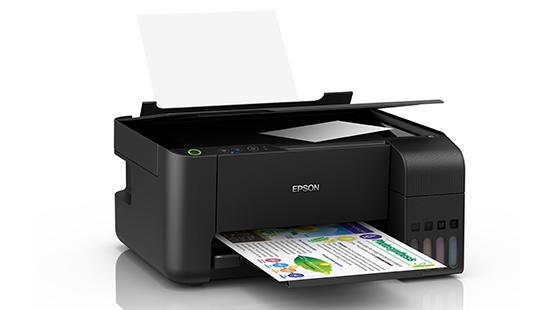Tech
Samsung vs. iPhone: Which One Is Better?

Over 90% of the world’s population has a mobile phone. Owning a mobile device has become essential for our day-to-day lives. They act as our calendars, GPS, and source of all forms of communication.
Two of the biggest producers of mobile devices are Apple and Samsung. But this leaves many people with the debate of Samsung vs iPhone when it comes to buying a new phone.
This article is a quick comparison guide for those looking to buy a Samsung or Apple phone.
We cover prices and product design, as well as comparing hardware and software. We also look at cameras, battery quality, and a few other considerations. Let’s get into it!
Price and Value
The biggest initial difference between an Apple and Samsung phone is the price. The flagship phones for Apple tend to be a lot more expensive than those produced by Samsung.
There is also a lot less flexibility in price with Apple products. They tend to be less widely available, only found at licensed retailers at one price point. Samsung products are much easier to get hold of, and often have a greater range of price tags.
Product Design
Apple prizes its sleek minimal designs. Most models are thin and lightweight, often compromising screen size. The new iPhone 14 has an aerospace-grade aluminum casing for protection.
Although over time Apple has improved device durability, they’re still prone to shattering.
Samsung phones tend to have a bigger screen size, with bulkier bodies. They are often a lot more customizable and have more features than iPhones.
The flagship Samsung models feature Gorilla glass. So they are more resistant to cracks when dropped.
They also have an IP68 rating. This means they withstand submersion for up to half an hour in shallow water. They are also very resistant to dust.
Buying a case for any new smartphone is a good idea. They protect your phone against bumps and scrapes during day-to-day wear and tear. You can protect your new Samsung smartphone with these new Galaxy cases.
Don’t forget to think about the available colors for your smartphone. Apple products are usually available in 3-5 colors, depending on the model. Samsung tends to offer a wider variety of colors and finishes to suit your personal style.
Phone Camera Quality
Apple has a reputation for having high-quality cameras. They boast amazing photo and video quality and a consistent camera experience. But many of the newer Samsung models have improved their camera experience a lot.
Samsung smartphones offer a versatile experience, with many fun features to experiment with. This is great for people who want Instagram-ready images straight from the camera roll, as the images are auto-edited. For those who prefer to edit their own images and want a more natural color profile, buy an iPhone.
But in the end, it is more about personal preference on how you want your photos to look.
Phone Hardware
Processing power is where Apple has the upper hand over Samsung models. Their flagship models have the latest technology, the A15 Bionic chip. It boasts seamless loading times and amazing graphics, with great thermal efficiency.
The flagship model for Samsung, the Galaxy S22, uses the Qualcomm Snapdragon 8th Gen processor. This offers elite gaming capabilities and high-speed Wi-Fi and audio.
Both the iPhone 14 Pro and Galaxy S22 come in several storage sizes from 128GB up to 512GB. But the iPhone 14 Pro also has a 1TB size available.
Operating Systems
Apple and Samsung use different operating systems: iOS for Apple and Android for Samsung. Both systems offer great experiences for users, so it comes down to what you want out of your phone.
iOS is much more streamlined and easy to use. It offers more control over RAM management, software, and personal security. Android is much more customizable, often at the expense of being easy to navigate.
Battery
Battery life and charging are some of the big areas where iPhones fall short. Samsung smartphones offer an impressive battery life, with super fast charging.
Many of their phones have advanced charging options. This includes charging without a cable, as well as being able to charge other devices from your phone.
The iOS software in Apple products is quite efficient, preventing excessive battery usage. But it can still take up to three hours for a full charge on the newest iPhone. This doesn’t compare to less than an hour on the new Galaxy S22 smartphone.
Other Considerations
When choosing between an iPhone and a Samsung, there are a few other features to consider. These can make a big difference in your experience using your device.
Voice-activated assistants are now available on most smart devices. Siri is the Apple assistant and Samsung uses Bixby. Most Android devices also have the option of Google Assistant.
Although Siri is competitive software, Google assistant is the best on the market.
Security is another factor to think about.
Apple is a lot stricter when it comes to which products get allowed into the Apple app store. This reduces the chances of viruses or breaches of personal information. Samsung products are likely to need extra security apps for peace of mind.
Product integration is another consideration for people with multiple devices. Apple products offer seamless integration between iPad, Mac or Apple watch.
Samsung is further behind in this aspect, but you can still access data across many devices. Downloading the Google suite, such as Google calendar or drive, can help achieve this.
Samsung vs iPhone
When it comes to choosing Samsung vs iPhone, there are many factors to consider. This article has highlighted a few key points from operating systems to battery life. But in the end, it is all about personal preference and what you want out of your smartphone experience.
If you found this article helpful then check out our technology section. There you can find other great reads about smartphones, online businesses, and more!
Tech
5 ways that PopAI helps impress your boss?


Impressing your boss with your work is a difficult task to do. You may be a hard or smart worker, but a boss can find flaws in you. Yes, it can be stressful sometimes because you give 100% to the work.
Especially in presentation tasks, your boss may need more creativity.
But I have a solution for you! You don’t need to spend hours making large presentations.
Interesting?
You can do this with the help of PopAI, And I will explain in detail how PopAI helps impress your boss and excel in your workspace. Here are 5 ways that PopAI can set you apart from others.
1. Increase in efficiency and productivity
One of the primary benefits of using this AI is that it increases the efficiency and productivity of employees. With the help of this tool, employees work faster with great results. It allows you more time to focus on strategic decisions and creativity, rather than doing repetitive tasks.
It can handle appointment scheduling, generate reports, and e-mail filtering. With this facility, your creativity and time on the strategic part will be noticed by your boss and he will be impressed by your enhancement in productivity.
2. Data-Driven decision making
AI tool is best at transforming complex data into meaningful data that is easy to understand in the form of graphics, charts, etc. Problems can be identified very fast through insights, whereas it is quite difficult to achieve this through manual analysis. So just imagine, providing data-driven analysis to your boss and giving solutions to the same will do wonders for your reputation in front of your boss.
3. Improved customer service
It facilitates improving customer service. With AI-driven chatbots, it can help you provide prompt and reliable responses to customers. These tools can operate 24/7, which means it is available after business hours. With this approach, customer satisfaction will be increased and following this business will also get a good name in the market.
4. Helps in making business presentations
Time is limited, but work in the company sometimes gives stress to the employees, especially when the boss gives a task of making a presentation at short notice. It will be more difficult when you are not good at colour combination and creating graphics.
So here It comes into the picture, with its Ai for presentation tool, you can make as many presentations as you want in minutes. You just have to enter a topic, select the audience tone, and select the pages and language. With its AI-driven tool, it will suggest colour combinations, and layouts and make your presentation engaging through wonderful visuals in the form of charts and graphs.
5. Collaboration and communication
This AI tool has a wonderful feature that organizes tasks, sets deadlines, and monitors progress. It becomes very handy during office meetings, when you can communicate with your team, that this particular project needs data. With this, the performance can also be tracked and what needs to be done.
Effective communication leads to better results and it can give you value in the company and helps you in gaining skills related to leadership and team player skills. There is a high possibility that with this effective approach, you will achieve positive results for your company.
Conclusion
Having PopAi is like an asset not only does it contribute to individual growth but also it gives wings to the overall success of the company. It possesses a multi-tasking feature that not only fastens the work but also gives you more creative options in using this wonderful tool.
So as a professional, if you want to win the competition, then you need to adopt this kind of tool which increases your productivity as well as improves your leadership skills.
Tech
BLDC Motor Controller Design Principles


BLDC (Brushless DC) motors are widely used in various applications, from consumer electronics and appliances to automotive and industrial systems. To control the speed and direction of BLDC motors, specialized motor controllers are required. At Integra Sources, we specialize in designing custom BLDC motor controllers that meet the unique requirements of our clients’ applications.
What Is a BLDC Motor Controller?
A BLDC motor controller is an electronic device that controls the speed, direction, and torque of a BLDC motor. It consists of a microcontroller or digital signal processor (DSP) that generates the control signals for the motor’s power electronics, including the power transistors or MOSFETs. The BLDC motor controller also includes feedback sensors, such as Hall effect sensors or encoders, to provide feedback on the motor’s speed and position.
Key Design Principles of BLDC Motor Controllers
- Sensorless vs. Sensored Control: BLDC motor controllers can be classified into two main types: sensorless and sensored control. Sensorless control relies on the back electromotive force (EMF) of the motor to determine its speed and position, while sensored control uses external sensors, such as Hall effect sensors or encoders, to provide feedback. The choice between sensorless and sensored control depends on factors such as cost, complexity, and performance requirements.
- Commutation Techniques: BLDC motors require electronic commutation to control the timing of the motor’s winding currents. There are several commutation techniques used in BLDC motor controllers, including trapezoidal (six-step) commutation and sinusoidal (vector) commutation. Trapezoidal commutation is simpler and more cost-effective but may result in lower efficiency and torque ripple. Sinusoidal commutation provides smoother and more efficient motor operation but requires more complex control algorithms and hardware.
- Control Algorithms: The control algorithm used in a BLDC motor controller determines how the motor’s speed and torque are regulated. Common control algorithms include open-loop control, closed-loop speed control, and closed-loop position control. Open-loop control provides basic speed regulation but does not account for variations in load or motor parameters. Closed-loop control algorithms use feedback from sensors to adjust the motor’s speed and position in real time, providing precise control over the motor’s operation.
- PWM (Pulse-Width Modulation) Techniques: PWM is used to control the average voltage applied to the motor windings, thereby controlling bldc motors. There are several PWM techniques used in BLDC motor controllers, including six-step commutation PWM, sinusoidal PWM, and space vector modulation (SVM). These techniques vary in complexity and efficiency, with space vector modulation offering the highest level of control and efficiency.
- Overcurrent and Overtemperature Protection: BLDC motor controllers must include protection features to prevent damage to the motor and controller in the event of faults or overloads. Overcurrent protection limits the motor’s current to prevent overheating and damage to the motor windings. Overtemperature protection monitors the temperature of the motor and controller and reduces the motor’s power if it exceeds a safe threshold.
Integra Sources’ BLDC Motor Controller Design Services
At Integra Sources, we offer comprehensive BLDC motor controller design services to help businesses create custom motor control solutions for their applications. Our services include:
- Requirements Analysis: We work closely with our clients to understand their specific requirements and develop a detailed specification for the BLDC motor controller.
- Hardware Design: Our experienced hardware engineers design the circuitry and PCB layout for the BLDC motor controller, ensuring optimal performance and reliability.
- Firmware Development: Our software engineers develop the control algorithms and firmware for the BLDC motor controller, including PWM control, commutation algorithms, and protection features.
- Testing and Validation: We provide rigorous testing and validation services to ensure that the BLDC motor controller meets our clients’ performance and reliability requirements.
- Certification Support: We assist our clients with obtaining the necessary certifications for their BLDC motor controller, including CE, UL, and RoHS compliance.
Conclusion
BLDC motor controllers play a critical role in controlling the speed, direction, and torque of BLDC motors in a wide range of applications. At Integra Sources, we specialize in designing custom BLDC motor controllers that meet the unique requirements of our clients’ applications. Contact us today to learn more about our BLDC motor controller design services and how we can help you bring your motor control project to life.
Tech
Understanding Solar Energy and Photovoltaics: A Simple Guide


“Have you ever wondered about the power of the sun? The sun gives us light and warmth every day. This energy from the sun is called solar energy. It’s a big part of our lives, even though we might not think about it much. Solar energy is not just about staying warm or seeing during the day. It can also be turned into electricity to power things in our homes and schools. This is where photovoltaics come in. Photovoltaics is a fancy word, but it simply means making electricity from sunlight. It’s a smart way to use the sun’s energy. In this guide, we’ll explore how solar energy and photovoltaics work, and why they’re so important for our planet and future. Let’s start this exciting journey into the world of solar energy!”
What is Solar Energy?
Solar energy is like a gift from the sun. When the sun shines, it sends light and heat to Earth. This light and heat is what we call solar energy. It’s very powerful and has been around since the beginning of time. Interestingly, solar energy is behind many things we see and do. For example, it helps plants grow, and we feel its warmth on a sunny day.
Moreover, solar energy is not just for plants and warmth. It can do more. It can be used to make electricity, heat water, and even power cars. Solar energy is everywhere around us. Think about a sunny day at the beach or in a park. The warmth you feel and the bright light that helps you see are all solar energy.
Solar energy is special because it’s always there and never runs out. It’s a clean and safe way to make power, unlike some other types that can harm our planet. As we learn more about solar energy, we discover how amazing it is for our world.”
Discovering Photovoltaics
Photovoltaics might sound complicated, but it’s actually a simple idea. It’s all about turning sunlight into electricity. We do this using solar panels. These panels are usually seen on rooftops or in big fields. They are made of special materials that capture sunlight. When sunlight hits these solar panels, something amazing happens. The light gets turned into electricity. This electricity can then power our homes, schools, and even gadgets. It’s like magic, but it’s really science!
Moreover, photovoltaics is a great way to make clean energy. It doesn’t create smoke or harmful gases. This is really good for our planet. Using solar panels helps us keep the air clean and protect nature. Solar panels are becoming more popular. They show us a new way to make electricity without hurting the environment. As we learn more about photovoltaics, we find out how it can help us live in a cleaner, brighter world.
Benefits of Solar Energy and Photovoltaics
Solar energy is like a superhero of the energy world. First of all, it’s renewable, which means it never runs out. The sun will keep shining, giving us energy every day. This is different from other types of energy that can finish, like oil or coal. Also, solar energy is super clean. It doesn’t make the air dirty or harm the environment. When we use solar panels to make electricity, we don’t create any smoke or bad gases. This is really important because it helps keep our planet healthy.
Another cool thing about solar energy is that it can save people money. After the cost of setting up solar panels, the energy from the sun is free. This means lower electricity bills, which is great for everyone. Using solar energy and photovoltaics is a smart choice. It’s good for the Earth and can help us in many ways. As we use more solar energy, we take steps towards a cleaner and happier world.
Solar Energy in Action
Solar energy is not just something we talk about, it’s being used all around us. For example, some houses have solar panels on their roofs. These panels capture sunlight and turn it into electricity for everything in the house. Also, some schools use solar energy to power lights and computers. Moreover, solar energy isn’t only for buildings. It can be used in farming too. Farmers use solar panels to run machines and water plants. This helps them grow food without using so much electricity from other sources.
Another great thing is that people can get help to install solar panels. There are special programs and incentives, especially for places like farms and labs, to make solar energy more affordable. Solar energy is becoming a big part of our lives. Every solar panel set up is a step towards a cleaner world. It’s exciting to see how solar energy is used in different ways and helps us all.
The Future of Solar Energy
The future of solar energy looks really bright, just like the sun! More and more people around the world are starting to use solar panels. This is great news because it means cleaner energy for everyone. One exciting part is that scientists are always finding new ways to make solar panels even better. They are working on making them more powerful and easier to use. This means that in the future, solar energy could be used even more than it is now.
Also, as young people learn about solar energy, they can think of new ideas to use it. Maybe one day, you could come up with a new way to use solar energy! So, the future with solar energy is full of possibilities. It’s an adventure that we are all a part of. Every step we take toward using more solar energy is a step toward a cleaner, safer planet for us all.
Conclusion
To wrap up, solar energy and photovoltaics are really important for our planet. We’ve learned that solar energy comes from the sun and is a clean, endless power source. Photovoltaics is a smart way to turn sunlight into electricity. This helps us in many ways, like keeping the air clean and saving money.
Remember, solar energy is not just about today, it’s about our future too. Every time we use solar panels, we’re helping our planet. It’s up to all of us, especially young people, to keep learning and thinking of new ways to use this amazing energy. So, let’s keep exploring and using solar energy. It’s a bright path towards a better world for everyone. The more we use the sun’s power, the happier our Earth will be!
-



 Biography5 years ago
Biography5 years agoJacqulyn Elizabeth Hanley is the Mother of Liza Soberano?
-



 Home4 years ago
Home4 years agoEpson L3110 Driver Free Download Latest Updated Version
-



 Games3 years ago
Games3 years agoBest Free To Play MMORPG To Try This 2021
-



 Biography5 years ago
Biography5 years agoAmanda Levy Mckeehan Biography, Family, Net Worth, Age, Affairs, Facts
-



 Biography5 years ago
Biography5 years agoWho is Rose Dorothy Dauriac? Scarlett Johansson Daughter?
-



 Biography5 years ago
Biography5 years agoJessica Ditzel Secret Information that Nobody Knows | Joe Rogan’s Wife
-



 Biography5 years ago
Biography5 years agoWhat is the relation of Nathaniel Larry Osorno with Liza Soberano?
-



 Home5 years ago
Home5 years agoLiza Soberano Biography, Age, Family and Boyfriends































